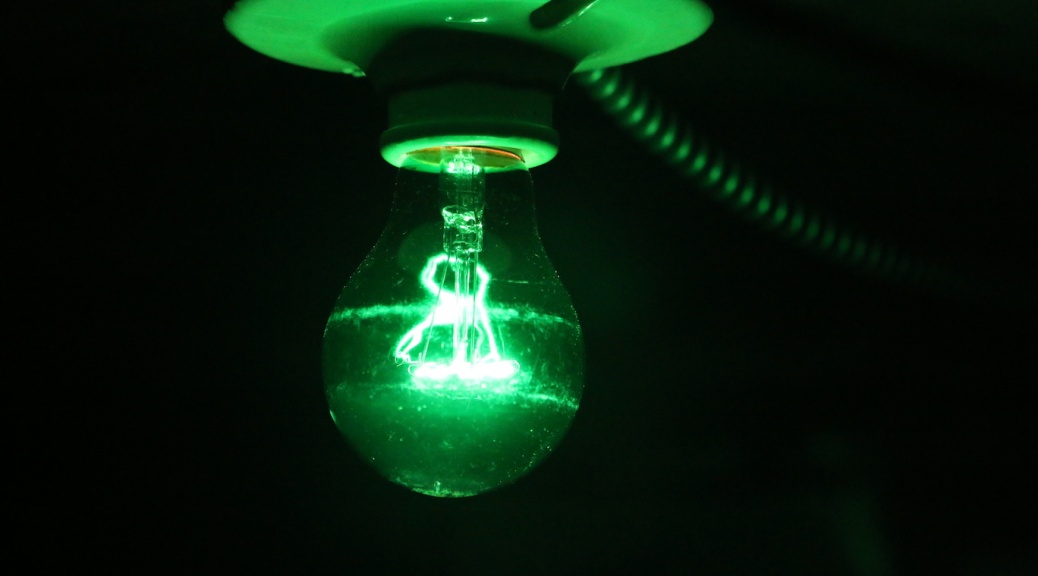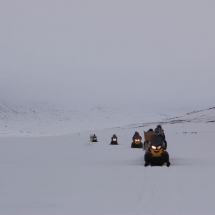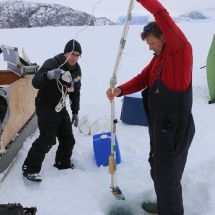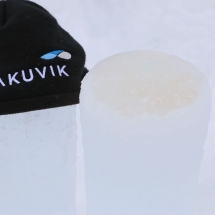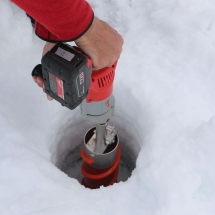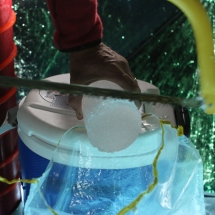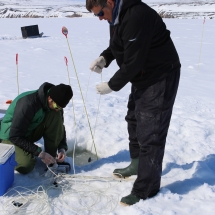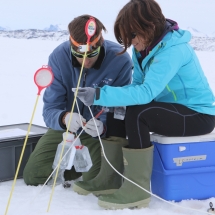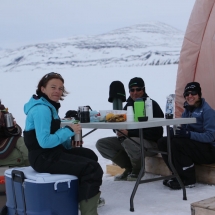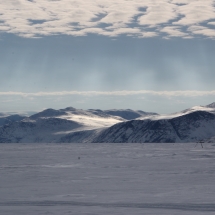Terrestrial organisms are composed of six major elements, C, H, N, O, P, and S, in addition to more than 50 trace elements. In the ocean, nitrogen (N) and phosphorus (P) are called limiting nutrients because they may be available in concentrations which limit photosynthesis in algae. C, H, O and S typically present in abundance are therefore non-limiting. Silica (Si) is also an important resource for some algae such as diatoms that use it to form their protective shells. For growth, phytoplankton consume the available forms of these elements namely nitrate (NO3), ammonium (NH4+), phosphate (PO42-) and silicate (SiO3–) from the surrounding waters.
In the Arctic, during the fall and winter, mixing of the water column enriches the surface layers with deep water containing high concentrations of nutrients. In spring, day length increases and light penetrates the water column, providing the energy necessary for phytoplankton to assimilate nutrients and carry out photosynthesis. Within days, the surface waters are depleted of nutrients due to the exponential increase in phytoplankton. Consequently, the population must develop increasingly deeper to access precious food resources. Eventually, the phytoplankton population stabilizes at a depth where the amount of available light becomes the limiting factor. Phytoplankton then depend on the weak input of nutrients from underlying layers as well as the recycling of nitrogen from organic matter in the form of ammonium. Nutrient dynamics in the water column are largely responsible for the observed succession of phytoplankton species over the season. Large cells develop in early summer when nutrients are plentiful, while the proportion of smaller cells increases as nutrient availability decreases.
To better understand the distribution of algae and study their nutrient uptake, it is essential to monitor the nutrient concentrations in the ice and sea water.
1 / Samples are taken every two days from the bottom few centimeters of an ice core and at different depths in the water column to measure the concentrations of nitrate, ammonium, phosphate and silicate. The concentrations are determined by colorimetry using an auto-analyzer at Marseille Institute of Oceanography (MIO) after the end of the field season.
2 / Incubation experiments are also carried out at the ice camp to quantify the use of carbon and different forms of nitrogen (ammonium, nitrate and urea) by phytoplankton. These experiments provide information about the new production based on the use of nitrate and regenerated production based on the use of ammonium. Finally, the remineralization of ammonium to nitrate by bacteria, called the nitrification, is quantified to get an overall picture of the nitrogen cycle.
The quantification of these processes is achieved through the addition of stable isotopes of nitrogen and carbon to samples in situ. These samples are then incubated for 24 hours in bottles deployed under the ice to reproduce the natural light conditions during algae growth. Back in the lab, mass spectrometer measurements of the initial and final isotope concentrations in samples provide accurate information on utilization and regeneration of nitrogen.

